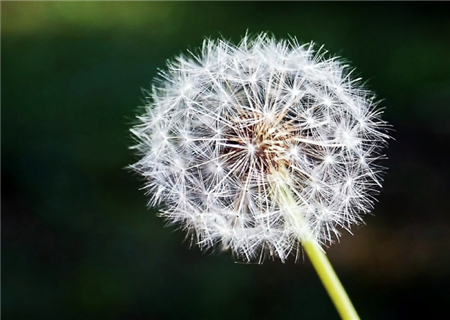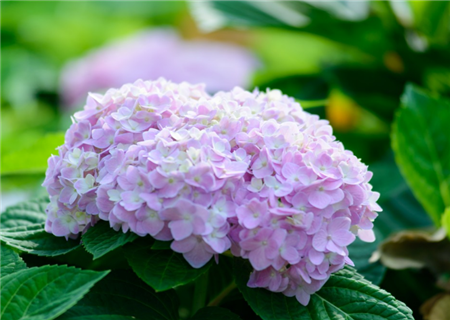How to grow dandelions? What should be paid attention to in artificial planting? What are the benefits and risks?
Dandelion is one of the most common plants when we were young, and it has become less and less in the city in recent years. As a perennial herb, dandelion is unforgettable in the hearts of many people because of its beauty drifting with the wind. So how should farmers grow dandelions? What should be paid attention to when planting dandelions? What are the benefits and risks of planting dandelions?
How to plant dandelions?
The main results are as follows: 1. Dandelion is a perennial root plant, and biennial plants can blossom and bear seeds under wild conditions. in early summer, the number of blossoms increases with the growth years, some plants have more than 20 flowers per plant, and the number of flowers per plant can be as high as 20. Seeds mature after 13-15 days of flowering.

2. The shell of the disk changes from green to yellowish green, and the seeds can be harvested when they change from milky white to brown. Do not wait until the disk is cracked before harvesting, otherwise the seeds are easy to fly and lose. Generally speaking, the number of seeds in each head is more than 100. The 1000-seed weight of large-leaf dandelion seeds is about 2 grams, and that of lobular dandelion seeds is about 0.8-1.2 grams.
3. When picking seeds, you can pick off the flower plate of dandelion, store it indoors and ripen for one day, wait for the flower plate to spread out, then dry it in the shade for 1-2 days until the seed is semi-dry, rub off the fluff at the tip of the seed with your hands, and then dry the seed.
4. In the place where dandelion is rich in wild resources, the root of wild dandelion can also be directly controlled for cultivation. Usually in October, after root digging, the plant is concentrated in the greenhouse, with a row spacing of 8 cm × 3 cm, watering enough water after planting, and new leaves can germinate in February of the following year. When organic fertilizer is applied again, the leaves can be picked and listed when they grow to a certain extent.
Second, what should be paid attention to when planting dandelions?
1. After harvesting seeds, dandelion can blossom and bear seeds after planting for two years. The longer the growing year, the more flowers it will blossom. At most, it can blossom more than 20. After flowering, the seed maturation period is very short. Generally, it can mature in half a month. Whether the seeds are mature or not requires color change. The shell of the disk changes from green to yellow, and the color of the disk changes from white to brown, which means that the seeds are mature and can be harvested.
2. Dandelion is resistant to both drought and alkali, and likes loose, fertile and well-drained sandy loam.
3. If you want to go on the market ahead of time and seize the market, you can dig roots in the wild and then plant them in the greenhouse to get twice the result with half the effort. According to the row spacing of 15 cm and the plant spacing of 5 cm, it is appropriate to bury the roots on the surface of the original roots, and the temperature can be controlled to control the growth of dandelions. If dandelion is put on the market in the peak season of market demand, the greenhouse temperature should be controlled to restrict the plant growth, and satisfactory results can be obtained.
4. If the seedlings need to emerge ahead of time after sowing, soak in 50-55 ℃ warm water, stir until the water is cool, soak for 8 hours, fish out, wrap the seeds in a wet cloth and put them in a place of about 25 ℃. It is covered with a wet cloth and watered with 50 ℃ warm water every morning and evening. The seeds can be sown after 4 days of germination. The sowing rate is 11.25 kg per hectare.
5. Dandelions should be watered frequently during their growth to keep the soil moist. Dandelion needs a lot of water after emergence, so keeping the soil moist is the key to the growth of dandelion.
6 sowing dandelion does not advocate the application of chemical fertilizer, although the application of chemical fertilizer young plants and leaves black protruding, but also lost the connotation of green plants, but also lost the game style of dandelion. Generally speaking, each hectare can produce 9000m2, 10500kg.
III. Benefits of planting dandelion
Dandelion leaves, roots and stems can be used as medicine, and the yield of dry products per mu is about 600kg. According to 6 yuan per kg, the yield benefit per mu is about 3600 yuan. Dandelion perennial herbs can be dug out and dried after growing for two years in a row. The price of roots is more than twice that of stems and leaves, and the yield per mu can reach about 300kg. The price is 13 yuan per kg, and the benefit per mu can reach 3900 yuan. In addition, it can be eaten as a vegetable, so the benefit per mu is about 7000-8000.
IV. Risks of planting dandelions
At present, the cultivation of Chinese herbal medicine is a good project, and the economic benefit is higher than that of food crops in the past, but too many follow the trend, resulting in a substantial increase in the price of dandelion seeds, and not everyone can grow a good dandelion. Planting areas and planting techniques are extremely important, so planting dandelion has certain risks. Planting should be adapted to local conditions and master good planting techniques.
Time: 2019-04-07 Click:
- Prev

Dream sweet orchid planting technology: with what soil cultivation is good? When do you plant it? How do you grow flowers?
Dream orchid is a kind of orchid, in our country has a long history, because the flowers are very beautiful, and ornamental value is high and deeply loved by flower friends. At present, many people like to put it in the office or home to decorate the indoor environment and improve the viewing value.
- Next

Is hydrangea poisonous? How to breed it? How to change the color? (with color blending skills)
Hydrangea is also known as eight immortals, powder ball, hydrangea and so on. According to the relevant historical records, hydrangea was planted in China in the Ming and Qing dynasties, and there are also hydrangeas in many scenic spots. Almost all the flowers of Hydrangea are asexual flowers, and their artificial cultivation is very developed.
Related
- Fuxing push coffee new agricultural production and marketing class: lack of small-scale processing plants
- Jujube rice field leisure farm deep ploughing Yilan for five years to create a space for organic food and play
- Nongyu Farm-A trial of organic papaya for brave women with advanced technology
- Four points for attention in the prevention and control of diseases and insect pests of edible fungi
- How to add nutrient solution to Edible Fungi
- Is there any good way to control edible fungus mites?
- Open Inoculation Technology of Edible Fungi
- Is there any clever way to use fertilizer for edible fungus in winter?
- What agents are used to kill the pathogens of edible fungi in the mushroom shed?
- Rapid drying of Edible Fungi

